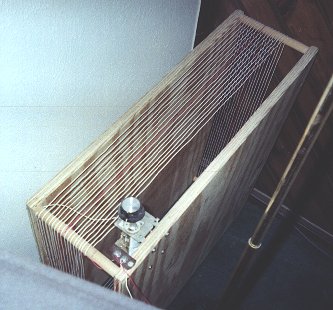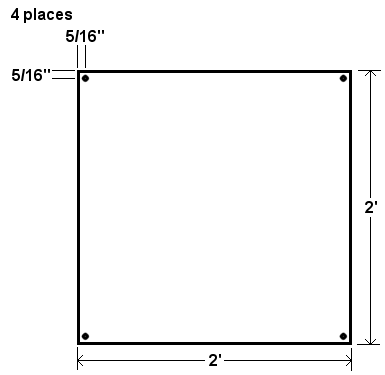

The two foot loop nestled in a space against the wall, in back of my speaker and beside a lamp.
A four foot by two foot piece of plywood discarded by a neighbor prompted a project - a two foot loop. Additional materials required were:
Admittedly - this description is brief. Anyone who has read through the article on constructing the four foot loop should have the idea by now ---






As expected, the loop tuned almost the full AM band. It topped out, however, at 1650 kHz. There was some benefit, however on a weak station on 1680 kHz. Both the UMR EMC lab and Joe Carr calculators seem to indicate that it is easy to cover the entire AM band. Neither loop tested, however, can go anywhere near 3 MHz. This may be due to self capacitance of the windings. It is probably possible to tune the whole band by switching in an out a single turn of the loop. At some point, this will be tried and the results posted here. The wide range of the tuning capacitor may make it possible to leave out that turn permanently.
The low end of the AM band tuned when the capacitor was opened to approximately the 365 pF position.
There are weak stations in the DFW area on 550, 590, 600, 640, 680, and 750 kHz. There are also many weak stations located higher on the band, including some TIS stations from DFW airport on 1640 and 1680 kHz. Reception on weak stations improved markedly on the inexpensive receiver - some signals that were not present at all, like the TIS stations, appeared and were listenable. Reception improved slightly on the SR-3. The greatest effect was on more distant stations, and those like 550 kHz that are closely spaced to local stations. The presence of a tuned loop increasing signal strength on the distant signal had the effect of overriding the adjacent channel interference. This advantage alone would be enough to justify the use of the loop in the DFW area.